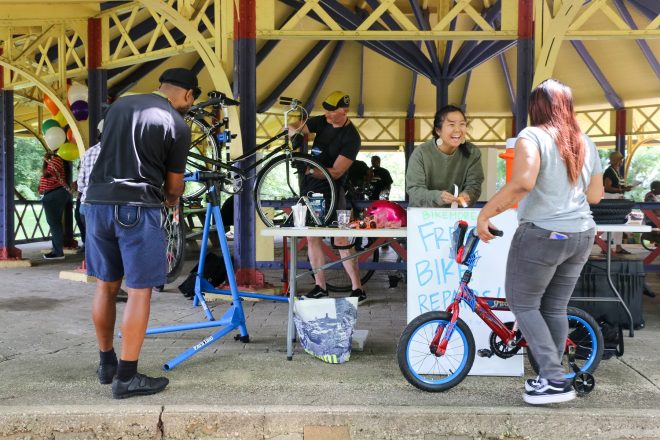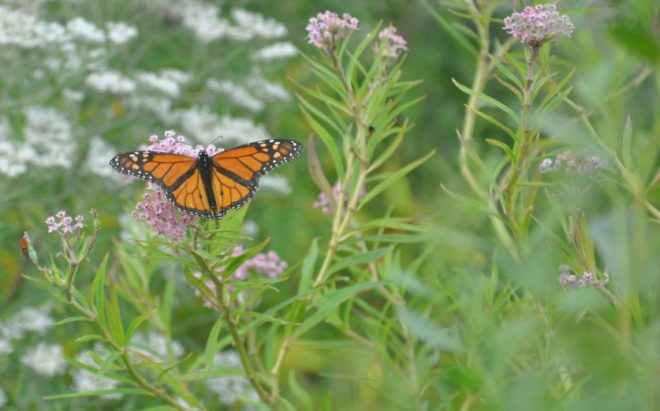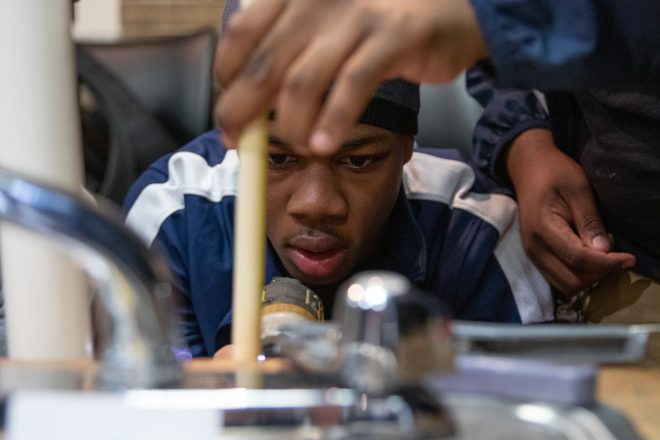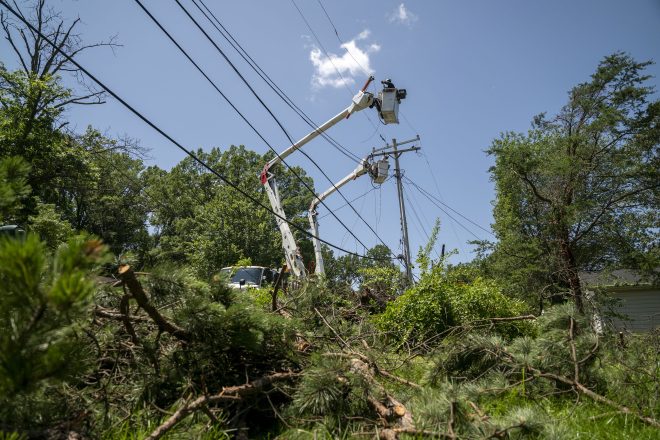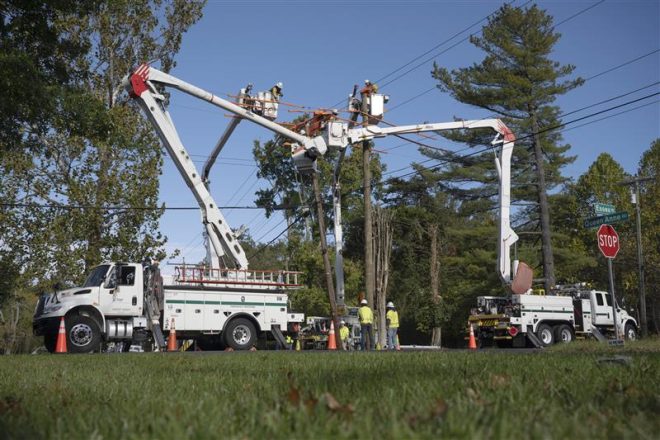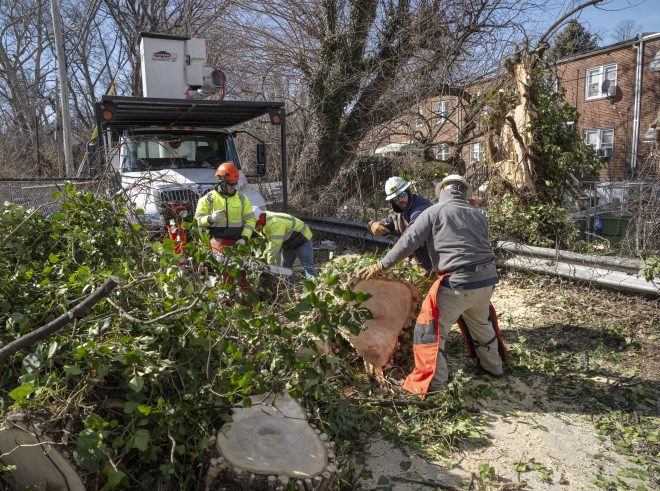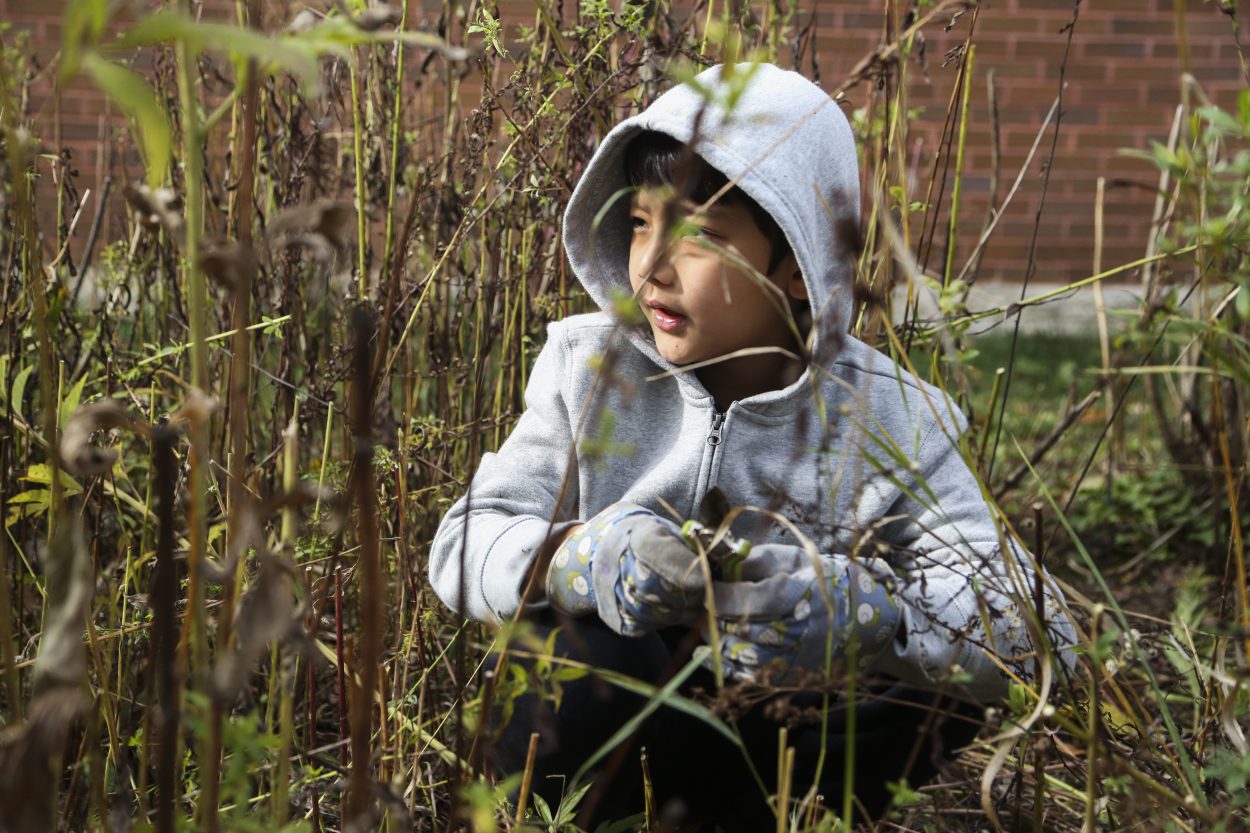
“Students were fascinated that Catonsville received 84 inches of rain last year, more than any other Maryland town.”
Mary Beth Capka’s second grade class at Hillcrest Elementary may well be future meteorologists in the making. Their AcuRite weather station, mounted above the roof in the school’s courtyard, has a temperature and humidity gauge and can measure rainfall, wind speed and wind direction, then wirelessly send that information to Capka’s indoor monitor.
“Students were fascinated that Catonsville received 84 inches of rain last year, more than any other Maryland town,” she beamed.
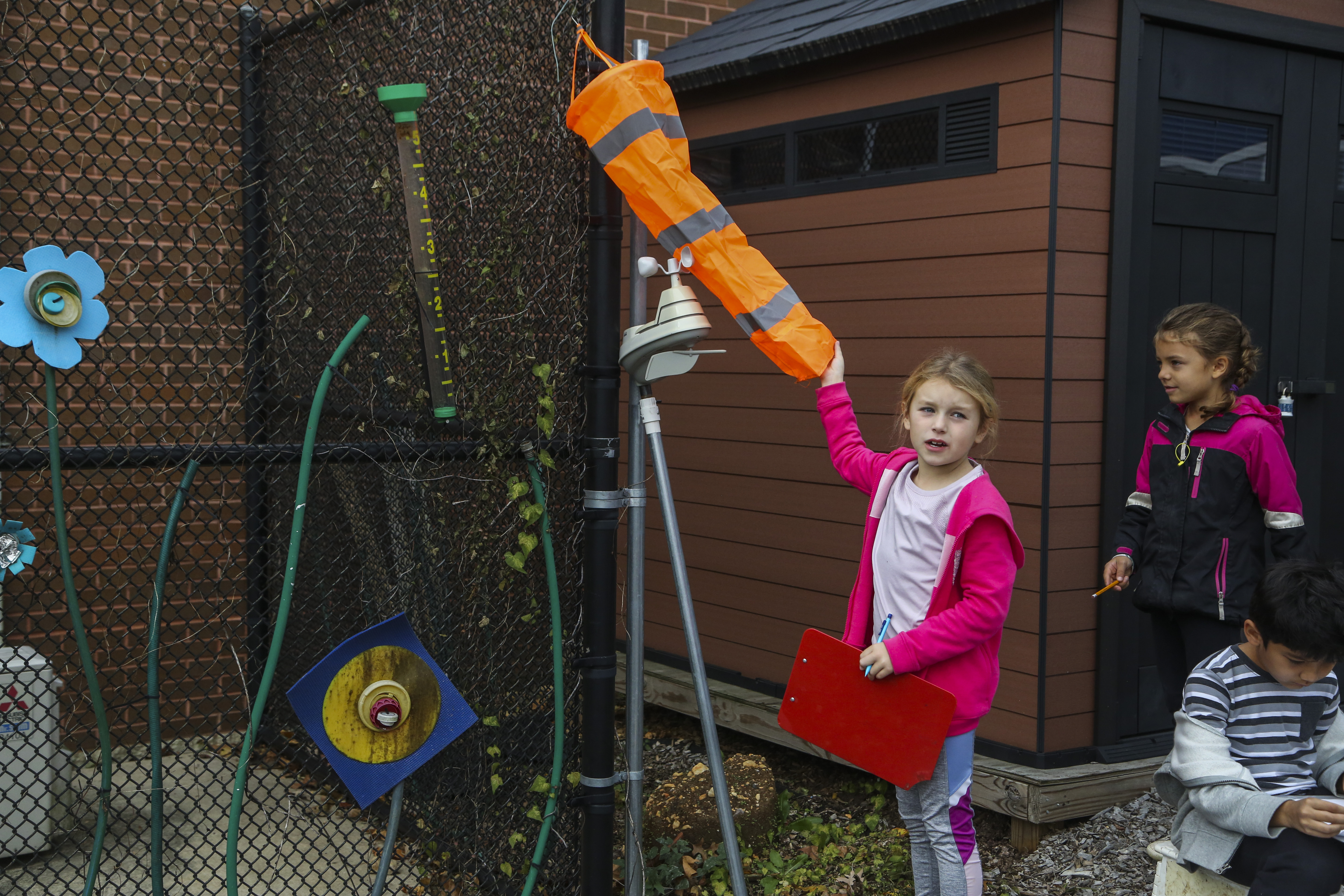
Wind speed, rain fall, temperature and more are measured and studied at Hillcrest Elementary
Daily forecasts by seven-year-old reporters will soon be included in the school’s daily announcements. Fifth graders have a more involved plan to use cameras to broadcast live from the courtyard, providing real time temperatures and forecasts.
The courtyard is a marvel of scientific wonders. In addition to the weather station, there is a sundial, a windsock and a garden full of native (to Maryland) plants, as well as vegetables galore. “The garden has been our community connection for ten years and it’s the kids’ favorite place to be,” said Capka.
Vegetables harvested from the garden have a broad reach. Some go into the school’s Food Pantry to help families in need. Lettuce, tomatoes and cucumbers were used last year to provide every student in the school with a lunch salad. “Salad Day was a big hit since the students grew the food. They were eaten with no complaints at all,” Capka explained.
The garden is designated Tier Five by the school system because it is tended year-round by PTA volunteers and school staff, and most of the bounty is donated to Catonsville Emergency Assistance or the Westside Shelter in Spring Grove.
Not to be outshone by the vegetables, the native plants play a role in the students’ education as well. They participate in stories and activities around pollination, including a visit from a bee colony. They learn how the pollinators also are key to the food plants.
The weather station joined the garden last year thanks to a BGE Bright Ideas Teachers grant. The grants of up to $500 support in-classroom projects that support science, innovation, energy efficiency, or the environment. In total, BGE has donated more than $72,000 to teachers in its service area.

